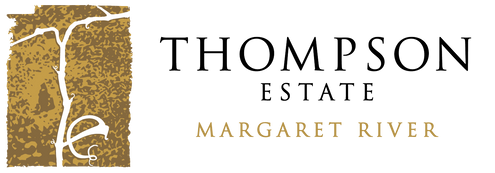Margaret River’s secret chardonnay weapon – research sheds new light on the Gingin clone and its origin
It has always been a mystery how Margaret River, scientifically predicted by Dr John Gladstones in the 1960s as a Bordeaux (cabernet) region, should incidentally be producing some of the world’s greatest chardonnays, a variety whose fame spread from Burgundy, on the other side of France and with a vastly different meteorological and soil pattern from Bordeaux.
There is now general agreement that the secret is in the clone of chardonnay which produces the outstanding flavour and intensity of Margaret River chardonnays. The predominant clone of Chardonnay grown in Margaret River today is known as the ‘Gingin’ clone. The origin of the name is that first large plantings were made in Gingin, a small town 70 km north of Perth, Western Australia. Valencia wines had a vineyard in the Swan Valley and also a large vineyard at Gingin later known as Moondah Brook and now owned by Accolade Wines. The cuttings came from the University of Davis California in 1957, and propagated initially in the Department of Agriculture Swan Research Station. The cuttings had been sent by Harold Olmo, the acclaimed professor of viticulture at the University of California, Davis to Bill Jamieson at the WA Department of Agriculture. Olmo had earlier been invited by the WA Ag Department to investigate the potential for expansion of the wine grape industry, which at that time was confined to the Swan Valley. In 1955 he came for a year on a Fulbright Scholarship, did detailed research on grape growing in the South West of Western Australia and completed his influential ‘Survey of the Grape Industry of Western Australia’. My brush with viticultural fame is that the Harold Olmo family lived near us in Perth during their stay and their son, Paul, attended St Louis Jesuit School nearby and for a year we were together in the same class. When Harold Olmo died at age 96 in 2006, Paul was reported to be living in Port Orford, Oregon.
 Harold Olmo, pioneer of viticulture who sent the original chardonnay Gingin cuttings to Perth in 1957
Harold Olmo, pioneer of viticulture who sent the original chardonnay Gingin cuttings to Perth in 1957
Confusion about the origin of the clone comes from the prominent viticultural characteristic of poor fruit set which leads to ‘hen and chicken’ (or millerandage) and loose bunches exhibit a combination of both large and smaller berries ranging from peppercorn to marbles in size. The characteristic ‘hen and chicken’ bunches of the Gingin clone led to the assumption that Gingin is the same as the Mendoza clone of Chardonnay. Both were derived from the “Old Foundation” Block at Davis, further confounding attempts to determine their origin. Over many years in Margaret River, the clone has been referred to interchangeably as Gingin or Mendoza.


Hen and chicken fruit set (millerandage) in Gingin chardonnay with loose, low yielding bunches. Also seen in Mendoza clone.
The Gingin clone was the first Chardonnay planted in the Margaret River region in 1975 and it soon
became the main clone for many successive vineyards. International fame followed when Decanter Magazine gave its highest recommendation to the Leeuwin Estate 1981 “Art Series” Chardonnay made by Bob Cartwright.
The ‘hen and chicken’ phenomenon can be visually unappealing, however, the combination of small and large berries and lower yields provide outstanding fruit concentration, elegance and persistent natural acidity.
The long-standing assumption that Gingin and Mendoza are the same clone has recently been corrected with recent genomics research revealing that the clones have a shared heritage in an old Californian source block at the University of California, Davis. Despite their shared origins from the Old Foundation block at UC Davis, Gingin and Mendoza are as distinct from each other as they are from other clonal selections of Chardonnay.
The work by Roach and colleagues is summarised in the figure below. The FPS nomenclature refers to the Foundation Plant Services vineyard, a division of UC Davis. Their website lists several hundred clones of chardonnay https://fps.ucdavis.edu/fgrmain.cfm. The distant origin of the Gingin clone at UC Davis is not clear, and may have been growing there since the 1930s, but is quite clear that is clonally different from Mendoza which was only transferred from Argentina to UC Davis in the 1960s. Incidentally, another clone showing millerandage is OF (Old Farm or Old Foundation) chardonnay, widely planted in South Australia and is also is distinct from Gingin. So, for now, the 60-year-old mystery of the origin of Gingin chardonnay has been solved with the help of modern research, and we can confidently refer to our secret weapon as Gingin.

Origin of Gingin clone of Chardonnay. Results of genomic research by Roach et al from AWRI, published August 2020.
At Thompson Estate, our Wilyabrup vineyard has the Gingin clone on the front blocks. Fruit from these 23-year-old vines are the source of our Estate and The Specialist Chardonnays. We also have 15-year-old Burgundian clones at Wilyabrup which make the Four Chambers Chardonnay, and at Treeton, we have predominantly 23-year-old Gingin vines and are in the process of grafting the whole chardonnay vineyard to Gingin.
Peter Thompson
Roach, M., Borneman, A. and Schmidt, S. (2020), Origin of Chardonnay clones with historical significance in Australia and California. Australian Journal of Grape and Wine Research, 26: 358-362.
